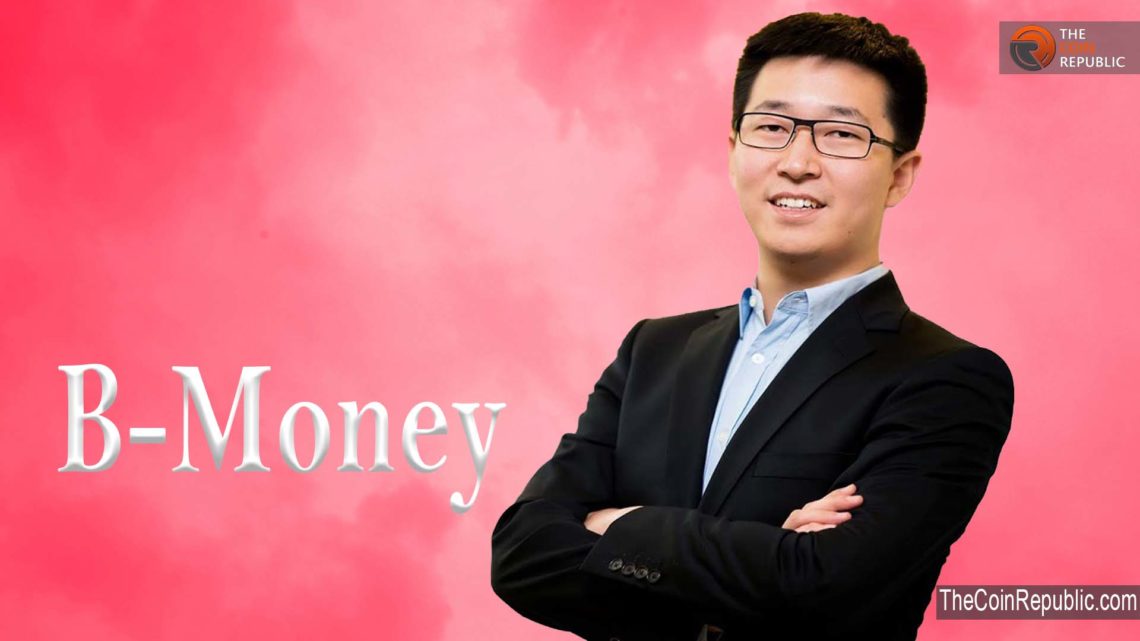Who is Wei Dai?
Wei Dai is a computer engineer who has offered his hands to cryptocurrencies and cryptography. He has developed a free Crypto++ library consisting of a variety of cryptographic schemes, B-Money, and a message authentication mechanism called VMAC.
You might be thinking that his name kinda sounds familiar. Well you are right, the tiniest bit of Ether, Wei, is titled after him.
Wei Dai introduced the concept of B-Money back in 1998, which is believed to give rise in interest towards cryptocurrencies. Now you might be thinking what B-Money is? I’ll explain it to you in the section below.
What Is B-Money?
This section will also clear why I think B-money can be a deception with respect to the development of Bitcoin, the Peer to Peer cryptocurrency.
B-money was an idea for untraceable transactions that can easily be organized without any interruption of intermediaries as we experience in the centralized system of payments. In short, Wei Dai wanted to eliminate the middlemen.
Timothy C. May’s crypto anarchy gave some food for thought to Wei Dai. I know you might be thinking “Anarchy”? Well this is not the “Chaos” king of anarchy you are imagining.
During crypto anarchy, the government — the commander — is abandoned or becomes unnecessary, in short, dependency or you can say the command of the authorities over the peers is eliminated.
In this scenario, violence is cannot be organized due to the fact that participants here are anonymous and cannot be associated with any actual locations or names.
Wei Dai explains this via a couple of protocols.
In the first scenario which he describes as impractical, every individual will have its own database of the sum of money belonging to each pseudonym. The accounts together exemplifies ownership of money, and the updation of these accounts is taken care of by this protocol.
In the second scenario, the pseudonym accounts are kept with servers (subsets of participants) rather than everyone. The broadcast regarding transaction messages here will be similar to the initial protocol, but now the associated participants need to validate the reception and completion of messages via a server subset.
Wei Dai described the initial protocol impractical as it utilizes unjammable and synched, nameless broadcast channel, rendering the second protocol practical.
Finally, he concludes this by explaining that if the servers need to be trustworthy, a few mechanisms are required to keep them honest. Every server needs to deposit some money in a unique account to be utilized as rewards or fines for proof of misconduct.
Fun fact, the reference of B-money was given by Satoshi Nakamoto in the Bitcoin whitepaper.
A Sleight of Hand?
Let us now conclude this article. Many of you readers who have some basic knowledge regarding Bitcoin, or have read its whitepaper, now know that B-money’s agenda appears the same as Bitcoin’s.
Both Bitcoin and B-money wants to eliminate the middlemen who disguise themselves as important (which they are not) with respect to making the transactions, eventually ruining the natural flow.
So, this was the very first part of the series of articles, where we will discuss more about Wei Dai and his other involvements in Bitcoin and other stuff, which may lead to something, I don’t know, Mysterious? Stay Tuned for the Next Part. Laters Gators!!
Anurag is working as a fundamental writer for The Coin Republic since 2021. He likes to exercise his curious muscles and research deep into a topic. Though he covers various aspects of the crypto industry, he is quite passionate about the Web3, NFTs, Gaming, and Metaverse, and envisions them as the future of the (digital) economy. A reader & writer at heart, he calls himself an “average guitar player” and a fun footballer.


 Home
Home News
News










